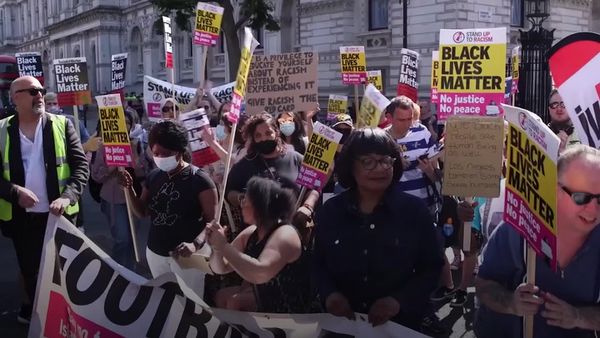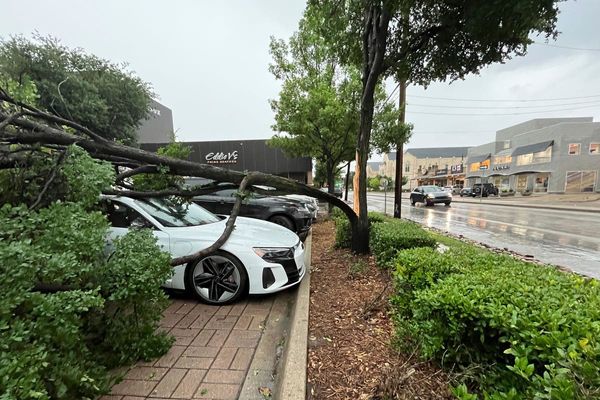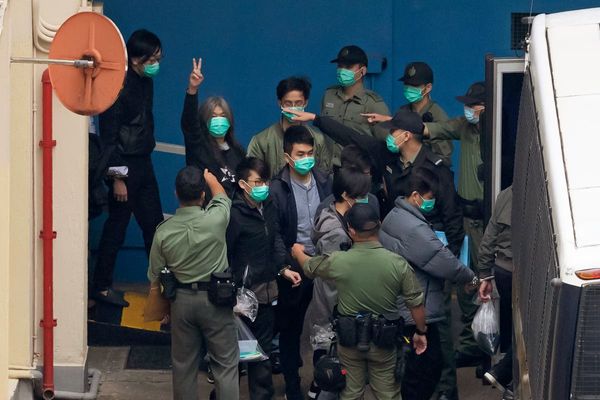
Audiences are rushing to theaters to see Oppenheimer. Early buzz is that this movie will be one of the blockbusters of the summer.
One reason for the interest: the film is loaded with the philosophical questions J Robert Oppenheimer and his team faced while developing the first atomic bomb. Do nuclear weapons make us safer? Will they inspire an arms race that will push humanity into extinction? Is it possible this weapon will lead to the destruction of the world?
The questions that the film’s director, Christopher Nolan, places at the center of Oppenheimer don’t feel theoretical to me. From 2012 to 2017 I worked as a nuclear missile operator in the US air force. During that time, I worked nearly 300 “alerts”, or shifts in underground launch control centers, where I oversaw maintenance, security and launch operations for 10 nuclear-tipped intercontinental ballistic missiles (ICBMs).
It may surprise you to hear that I watched a lot of movies while on alert. To be sure, the job of air force missile operators is often very busy. But it is also a 24/7/365 shift schedule. And on those late nights, weekends or holiday shifts when nothing was going on, my crew partners and I would turn to movies to get us through our shifts. It was here that I began to notice Hollywood’s love affair with nuclear weapons.
Early on, Hollywood gave us a lot to chew on. Sidney Lumet’s 1964 film Fail Safe is as serious a commentary on the questions around nuclear deterrence as has ever been presented on the screen. The same year, Stanley Kubrick defined the absurdity of a society that uses a nuclear arsenal to achieve “peace” in his film Dr Strangelove. When these films were released, it had been less than 20 years since Americans dropped the first atomic bombs on Japan. America was just beginning its nuclear arms race with Russia and the nuclear conversation felt very much alive to the average American.
But the American public grew weary of always being on high alert. Hollywood reflected this change as the meticulous films of the 60s began to give way to a new type of cold war thriller – one in which every villain seemed to speak with a Russian accent and wield some sort of vague existential nuclear threat that would be defeated by a red-blooded American. Some of these films, like 1983’s WarGames, were self-aware enough to work. But most existed on a spectrum ranging from Steven Seagal’s Under Siege to The Core – which is to say, mildly entertaining to so bad it’s somehow maybe almost good. As a result, in the decades before the release of Oppenheimer, the nuclear thriller had become an almost taboo genre in Hollywood.
That’s a problem, because the nuclear threat never went away. If anything, it got worse. Today, the United States has about 400 nuclear tipped ICBMs, the ones I operated, ready for launch every single day. It also has a robust nuclear bomber program as well as nuclear-armed submarines. In total, the US owns approximately 6,000 nuclear warheads. What’s more, the air force is currently in the midst of developing a new ICBM nuclear delivery system, called Ground Based Strategic Deterrent (GBSD). In 2020, the air force awarded a $13.3bn sole-source contract for GBSD to Northrop Grumman. The contract was awarded by default with no other competitors for the contract and little to no press coverage or public debate.
When I was a 23-year-old missile operator in the air force, my commander once told me that a good day in nuclear missile operations is a quiet one. Most of the days in the five years I spent working in underground nuclear launch control silos were just that: quiet. But not every day in the history of the US air force nuclear missile program has been quiet. A “Broken Arrow” is defined as an unexpected event that results in the accidental launching, firing, detonating, theft or loss of a nuclear weapon. Since the creation of nuclear weapons, there have been 32 Broken Arrows.
In the five years I served as a nuclear missile operator I performed targeting on dozens of active nuclear missiles. I commanded “major maintenance” operations like warhead swaps from one ICBM to another. We even pulled entire missiles out of the ground and replaced them with refurbished ones. And never once was I worried that I might have a Broken Arrow on my hands.
The problem is that, while a good day in nuclear missile operations is a quiet one, the quiet days don’t lead to a reduction in the number of these weapons. That’s why we need engaging stories about nuclear weapons in our movie theaters. We need journalism that comprehensively unpacks this issue. In short, we need a public that is as engaged with nuclear weapons as they were during the cold war. Otherwise, it’s only on days when Vladimir Putin threatens the use of nuclear weapons, or the days that North Korea test launches its latest ICBM, that we begin to discuss the inherent dangers of a world that allows nuclear missiles to exist. And on those not-so-quiet days, it’s already too late.
In May of 2022, while Nolan was in the midst of principal photography on Oppenheimer, I sat down for lunch in New York with Kai Bird, the co-author of American Prometheus, the book from which Oppenheimer is adapted.
I asked Bird if he thought Nolan would do justice to the subject. Bird told me that Nolan shared a draft of the script with him and asked him to read it for any historical discrepancies. Bird told Nolan that almost everything looked accurate, but that the script put the casualty rate from the bomb used on Hiroshima at 70,000, a number much lower than the casualty count accepted by most historians. Nolan said that he knew this figure was low but that he had gone back and read the original transcripts from the Senate hearing and used the actual words from Oppenheimer’s mouth.
Nolan’s attention to detail is what the nuclear conversation deserves. Oppenheimer sets the stage for a new conversation about nuclear weapons in Hollywood – one that doesn’t rely on overwrought cold war tropes. It’s a more difficult conversation because it’s one where, like Robert Oppenheimer, we have to come to terms with our own actions (or inactions) in order to make decisions about our future. Do we want to live in a world free from the threat of nuclear war? Or do we want to cover our eyes and throw the dice in a world with more than 14,000 nuclear warheads? Nolan isn’t afraid to ask these hard questions. I hope other film-makers follow his lead.
Cole Smith is a writer and director who received an MFA in screenwriting at Columbia University after serving in the US air force as a nuclear missile operator







